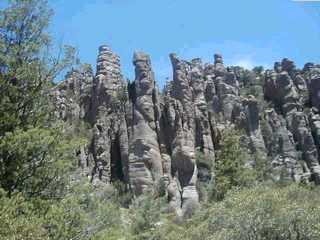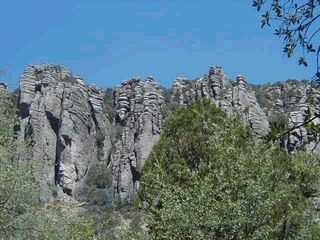|
AZ |
 |
Best Viewed in 800x640 using Internet Explorer
|
AZ |
 |
 |
 |
Millions of years ago, the volcanic bedrock here was uplifted to form the Chiricahua Mountains. As the mountains gradually rose, rock layers were tilted slightly to the west. The force of these events caused layers to shatter, creating deep vertical cracks called joints.
Since that time, water has been penetrating the cracks, dissolving minerals and washing away softer portions of rock. Expansion and contraction due to temperature changes, and contraction due to temperature changes, and the wedging of ice and plant roots in cracks, contribute to the breakdown of rocks. The weathering of softer layers leaves the harder layers to stand out in relief, producing rock formations with unusual shapes.
Erosion will continue as long as there are rain, ice, wind, plants, and temperature changes. As today's forck formations weather away, others will be exposed to take their place.
 |
|
|
|